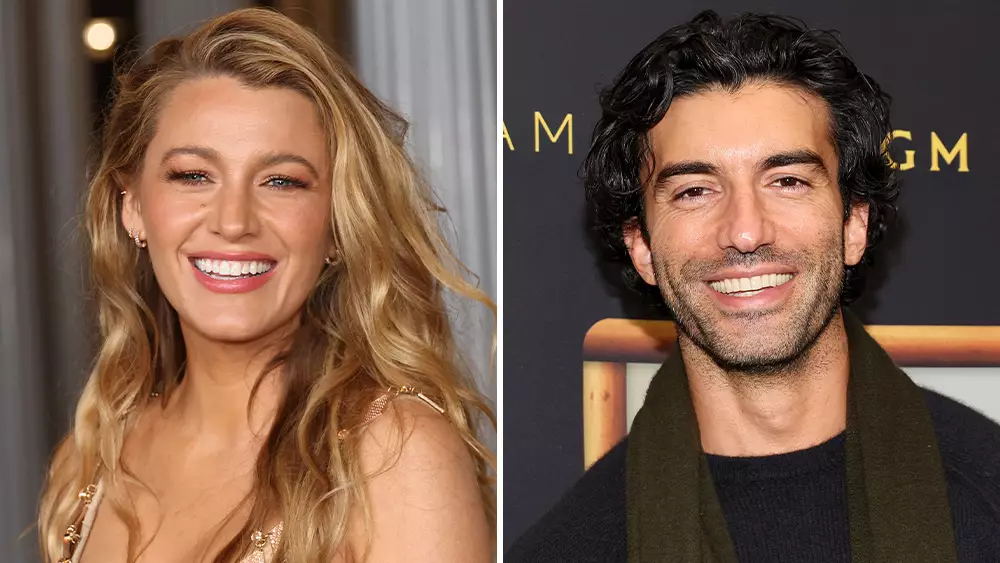In a dramatic twist that echoes the chaos of Hollywood’s glitz and glamour, actress Blake Lively has taken her legal battle against co-star Justin Baldoni to a federal court. This ongoing conflict highlights not only personal grievances but also the intricate dynamics of power, retaliation, and sexual harassment in the film industry. As allegations of a hostile work environment surface, the implications of this lawsuit extend far beyond Lively and Baldoni, potentially reshaping the public’s perception of Hollywood’s culture.
Blake Lively’s accusations against Baldoni stem from her experience while filming “It Ends With Us,” a film based on Colleen Hoover’s popular novel. In her recently filed federal lawsuit in New York, Lively claims that Baldoni and his associates engaged in a coordinated campaign aimed at silencing her after she reported incidents of sexual harassment and retaliation. Lively’s lawsuit comprises thirteen specific allegations, signaling a complex narrative of her experiences during and after production.
According to the lawsuit, Lively asserts that the retaliatory actions against her were premeditated, with an emphasis on the harm inflicted not just on her but on the entire cast and crew. The lawsuit characterizes Baldoni and his associates’ actions as a breach of contract and illegal under both state and federal law, pushing the legal boundaries of what constitutes a hostile work environment. These critical claims reveal more than just individual conflicts—they lay bare the oppressive structures that can exist behind the scenes in Hollywood.
A central theme in the lawsuit is the notion of accountability. Lively aims not just for damages, but to hold Baldoni, his production company, and key professionals in his PR team accountable for their alleged actions. The legal document contends that these parties attempted to retaliate against Lively, thereby stifling her speaking out about her experiences. Such claims resonate in an era where conversations regarding safety and respect in the workplace dominate public discourse.
As the lawsuit unfolds, it intersects with broader issues of media manipulation and public perception. Baldoni’s counter-suit against The New York Times for its exposé titled “We Can Bury Anyone: Inside A Hollywood Smear Machine” underscores the contentious nature of media narratives in today’s digital age. The dynamics of how information is presented, selectively quoted, or misconstrued can significantly impact public opinion and further complicate legal proceedings.
In this particular case, Baldoni claims that the media unfairly depicted his conduct and that Lively’s texts manipulated the narrative. By accusing Lively and the publication of cherry-picking and altering communications, Baldoni attempts to deflect the focus from the substantive issues regarding harassment and retaliation. His defense relies on an assertion that the strategies employed by his team were merely reactions to a challenging public relations situation rather than outright attacks on Lively.
This intricate back-and-forth pits the issue of personal integrity against corporate image. While Lively’s narrative seeks justice for an alleged oppressive atmosphere, Baldoni’s representatives’ remarks signal a desire to preserve their own reputations amidst a media landscape intent on exploring the darker undercurrents of Hollywood.
What remains crucial in this unfolding drama is the potential for systemic change within Hollywood. Lively’s efforts to speak out, as her legal team asserts, arise from a need for a safer workplace not just for herself but for all individuals in the industry. This legal conflict has the potential to bring essential discussions of workplace safety, mental health, and the need for robust support systems in the entertainment sector to the forefront.
In a climate increasingly characterized by the Me Too movement and calls for transparency, Lively’s drastic legal steps epitomize a growing reluctance among industry figures to remain quiet about grievances. The outcome of this case may well influence future reporting mechanisms and workplace standards within the industry.
As we witness this legal showdown, it presents an opportunity to reflect on the deeper issues at play in Hollywood. Blake Lively’s decision to pursue legal action speaks to a larger narrative around empowerment, accountability, and the necessity of maintaining integrity within the space. This litigation is more than a personal battle; it is a crucial moment that may encourage industry-wide reform. Ultimately, how this case is resolved will resonate not just within Hollywood’s elite circles but also among advocates fighting for a safer and more equitable workplace across various sectors. The stakes are inherently high, and the implications of the verdict could help steer the course of Hollywood culture in the future.


Leave a Reply